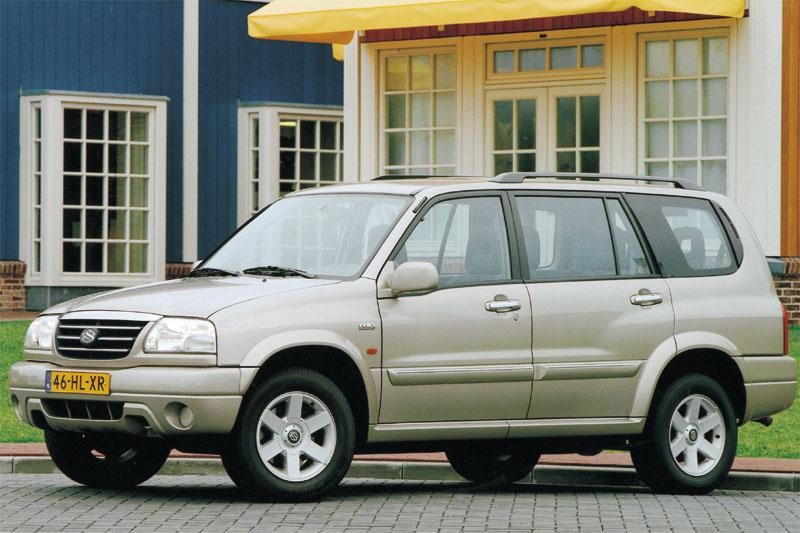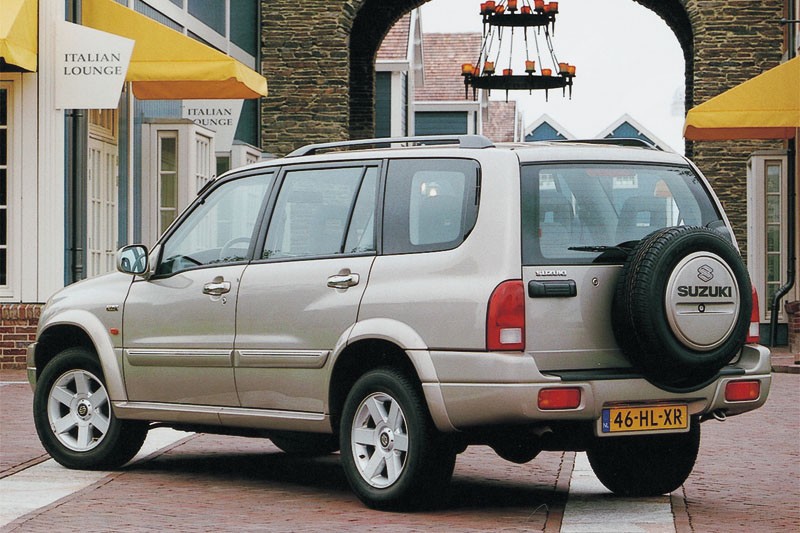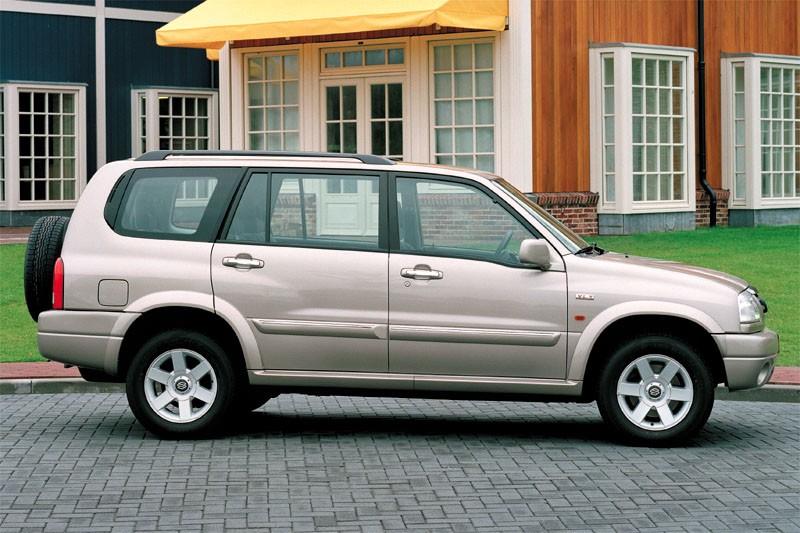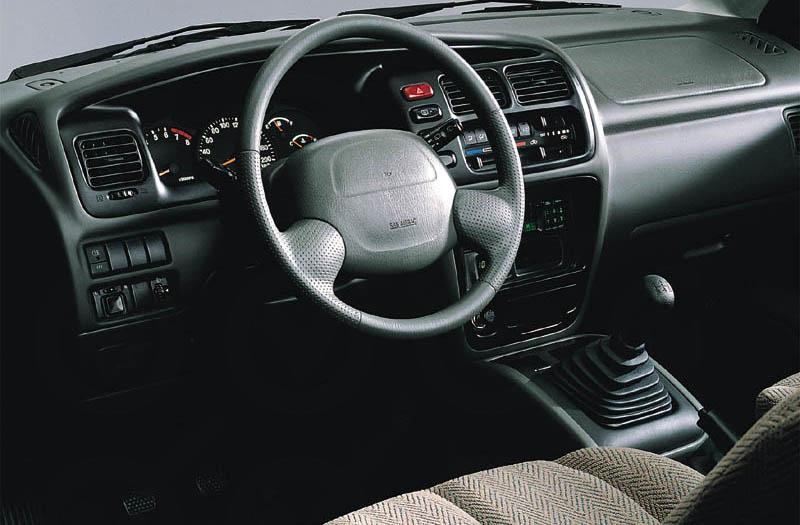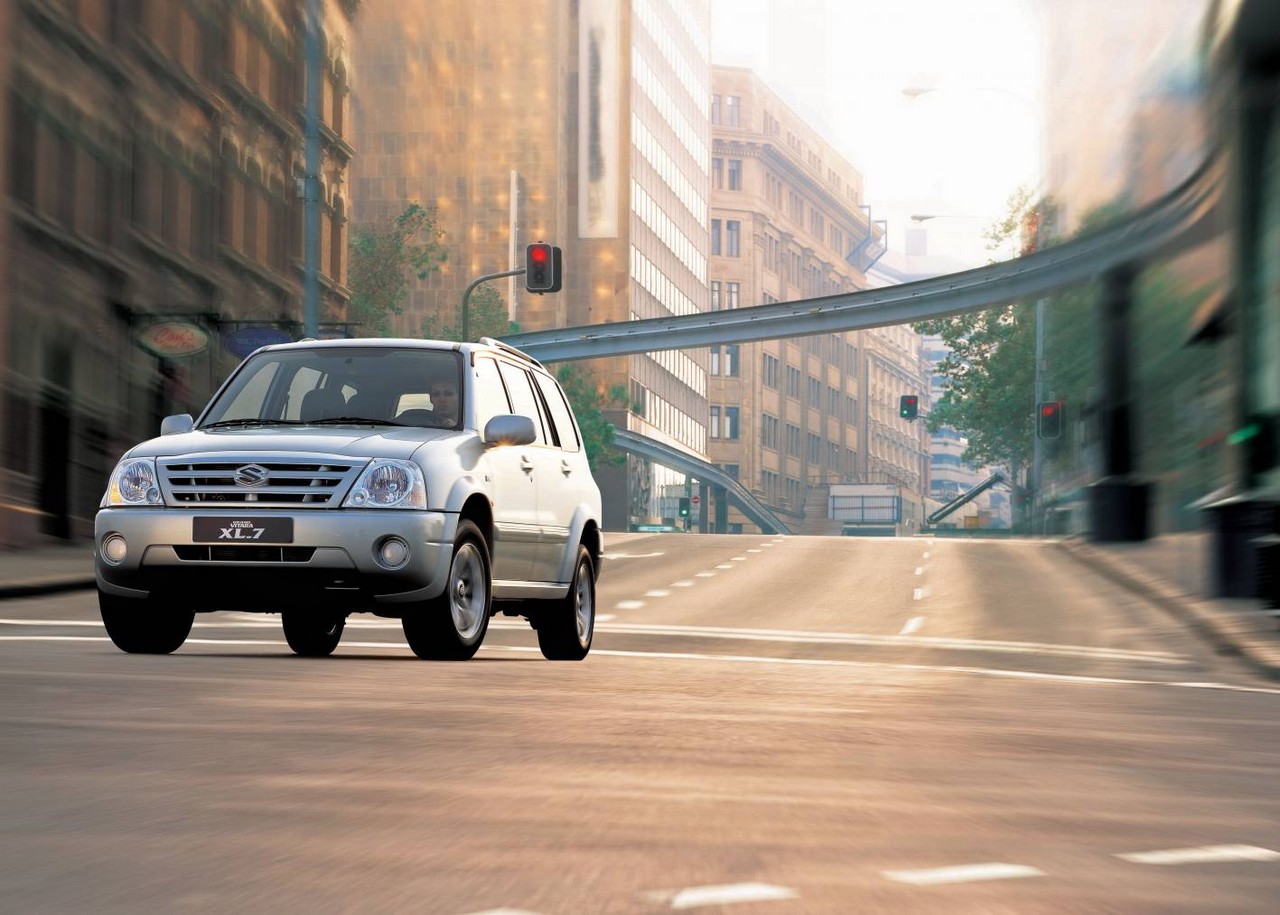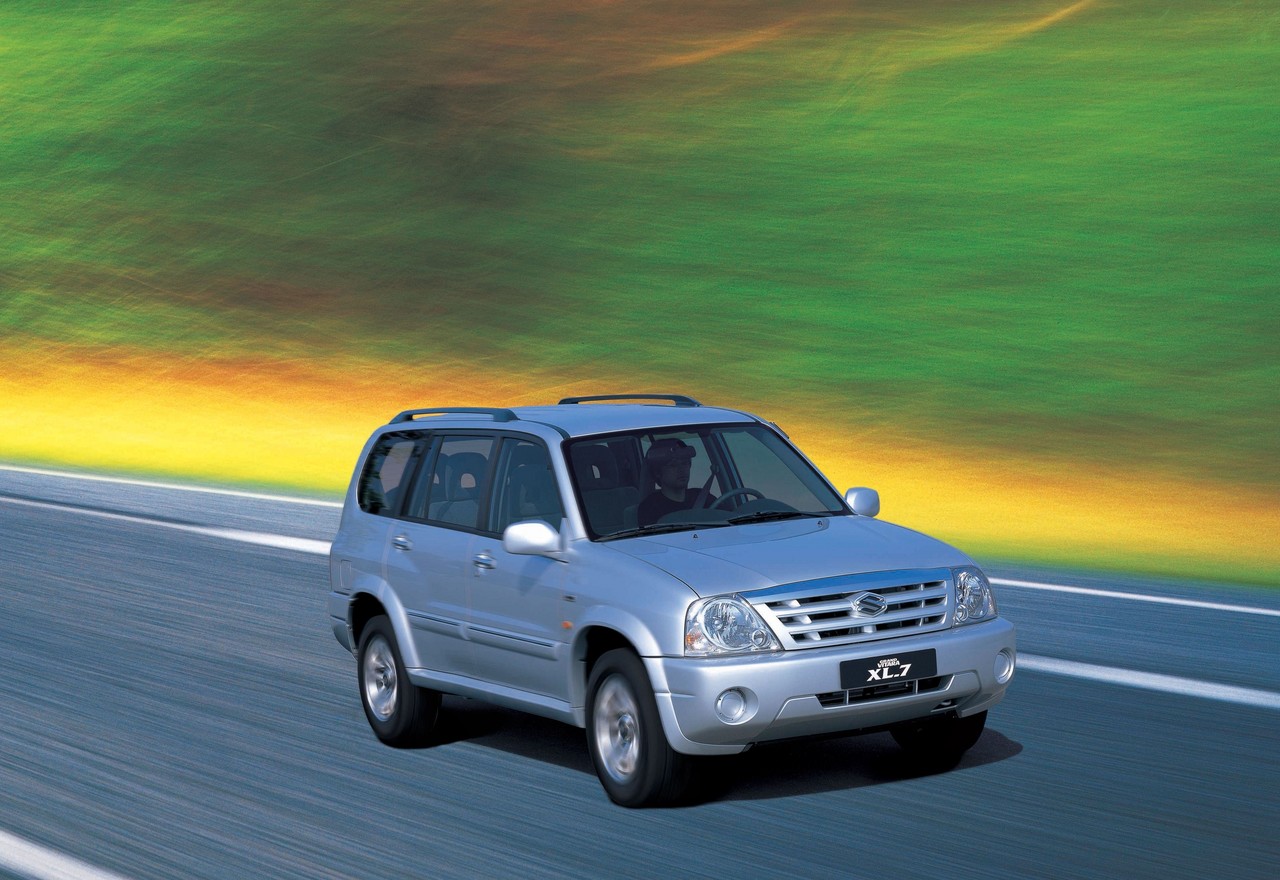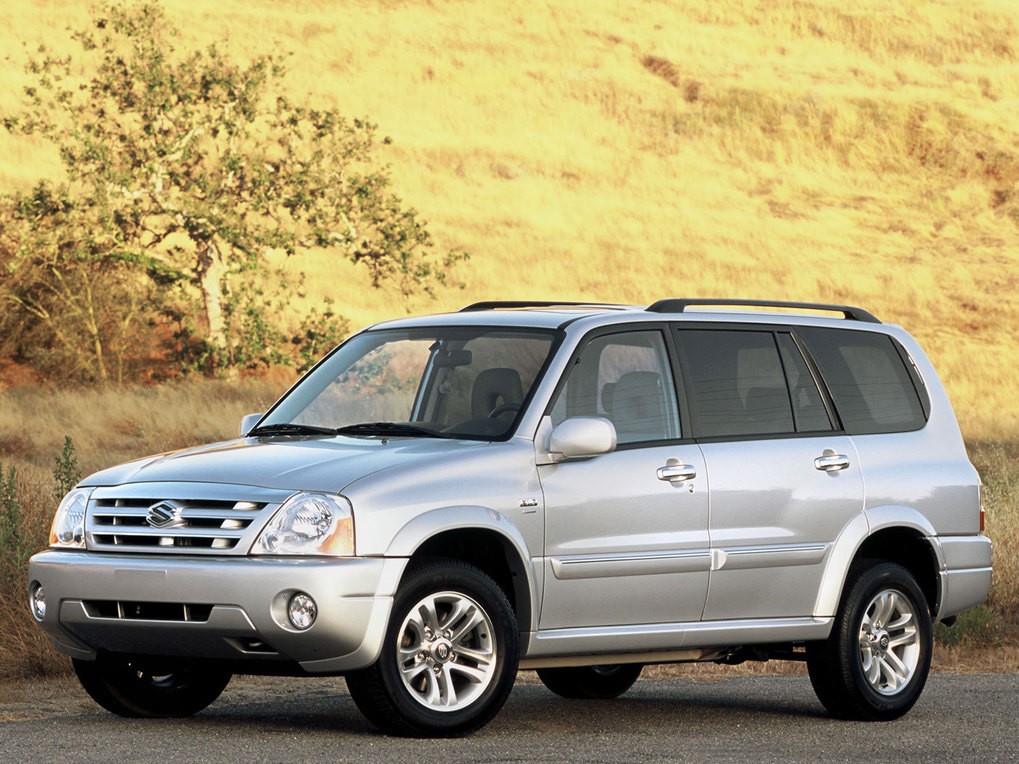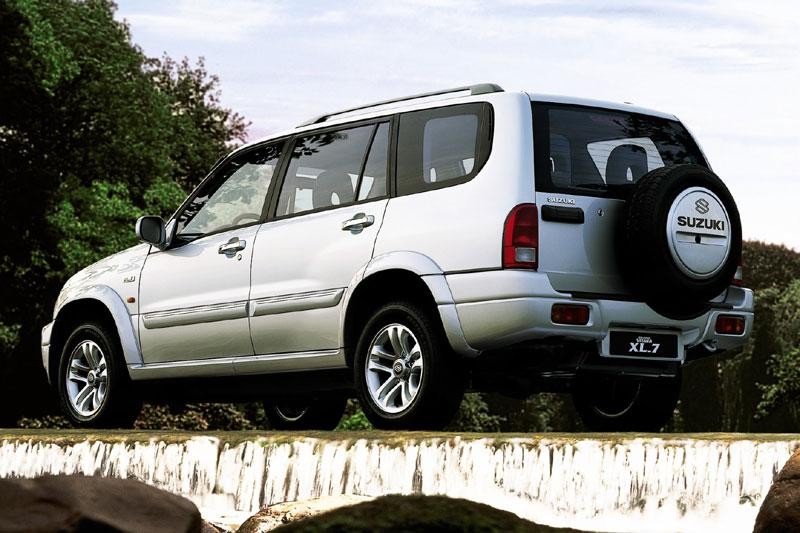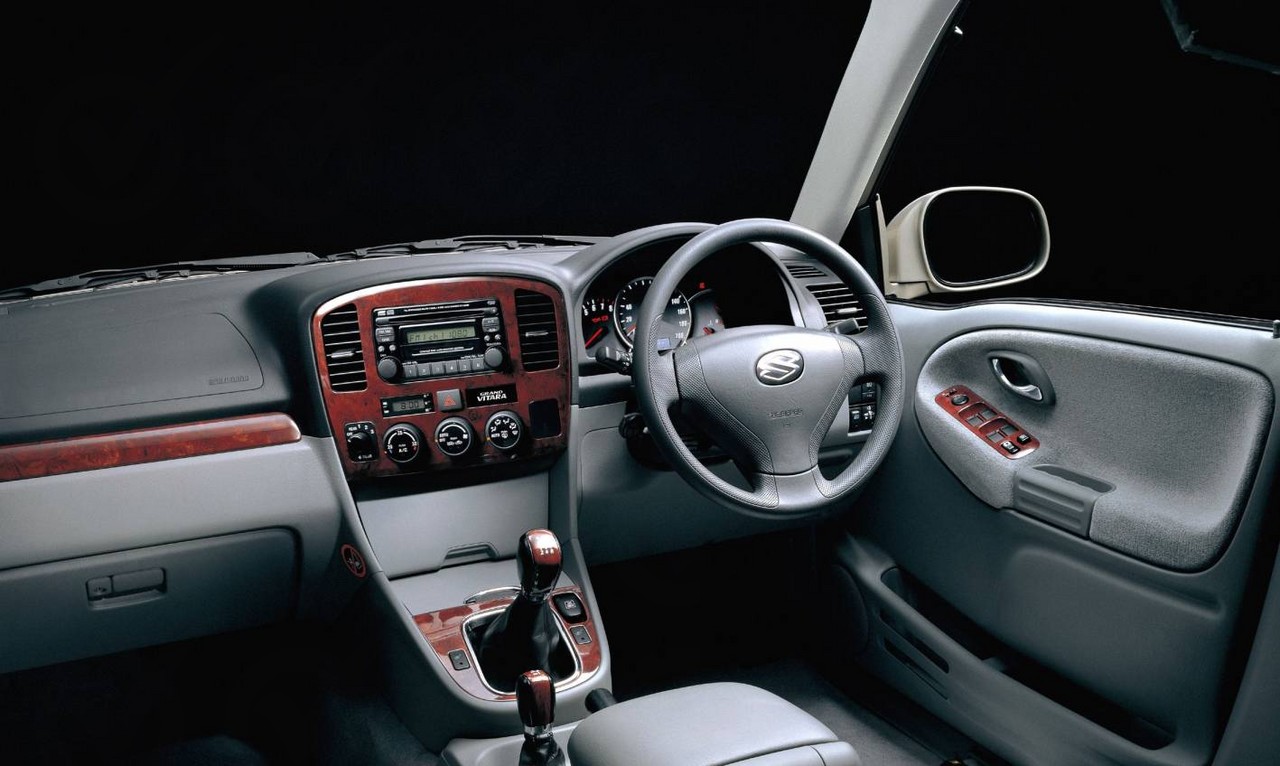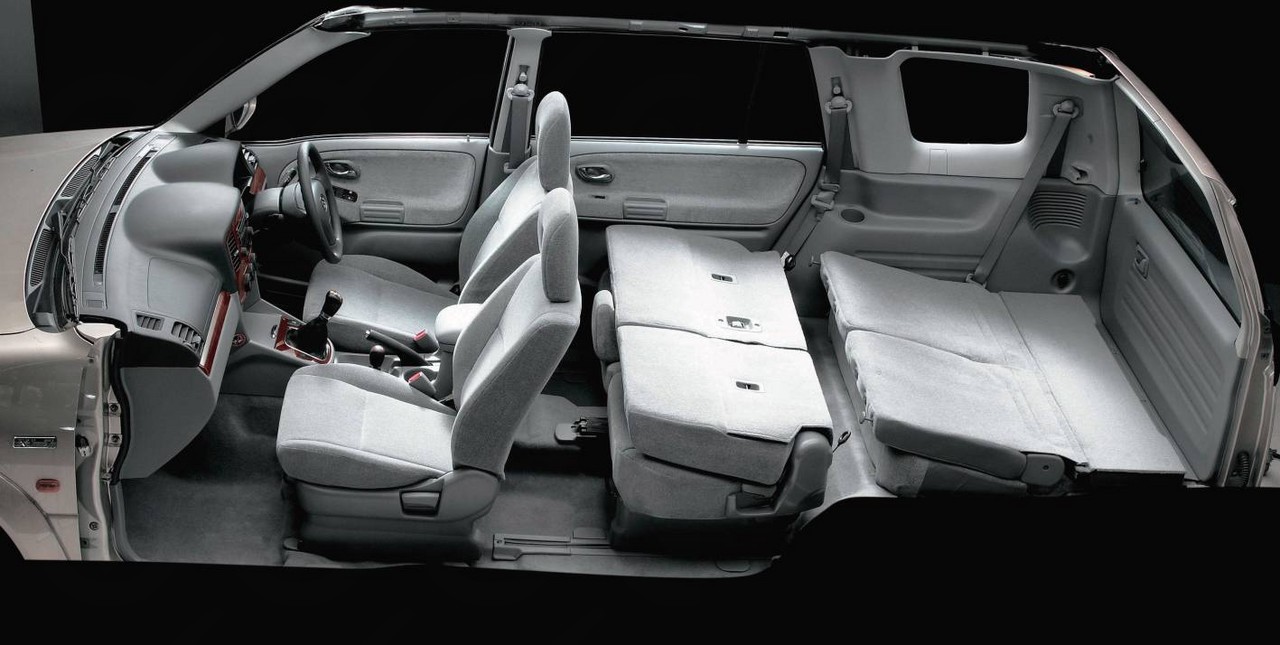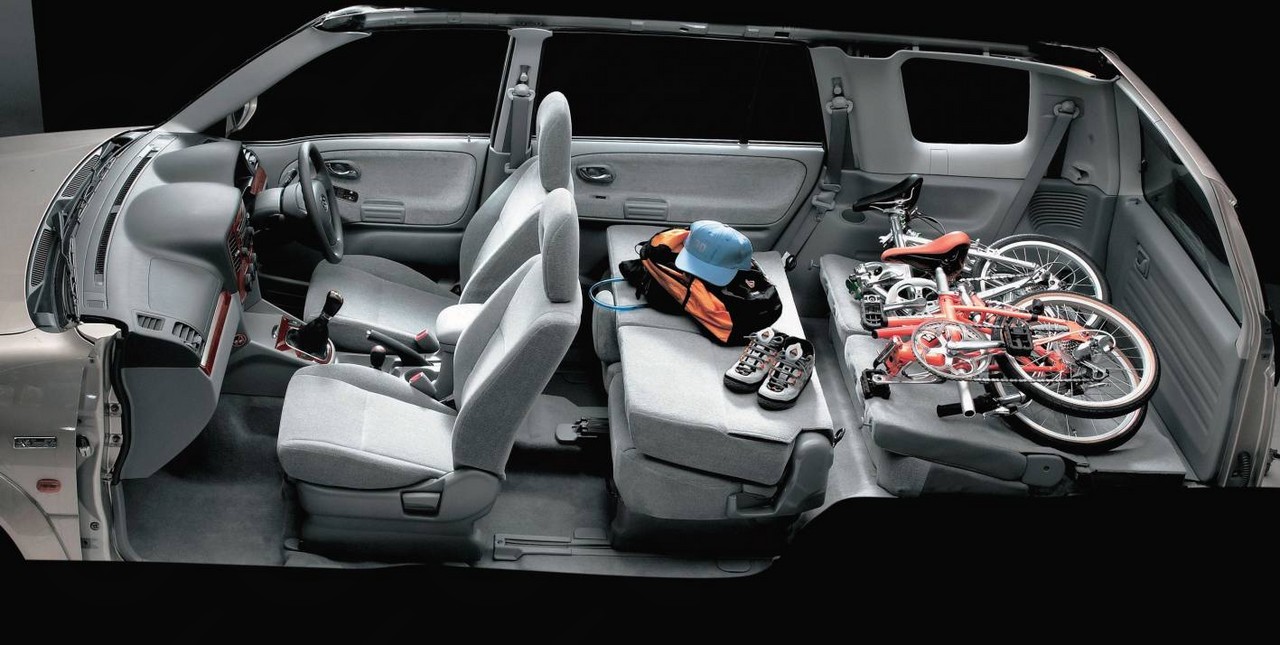
- Competent ride/handling balance
- High standard of interior fit
- Dual range 4WD provides off-road ability…
- … but limited by front suspension travel and ‘ramp-over’ angle
- 2.7-litre V6 petrol engine only adequate
- Front seats lack thigh support and comfort
- Space needed to open rear door
- Awkward sound system controls
Review: Suzuki JA.I XL-7 (2001-03)
Overview
Released in July 2001, the Suzuki JA Series I (JA.I) XL-7 was a seven seat, four-wheel drive wagon. Manufactured in Hamamatsu, Japan, the XL-7 was powered by a 2.7-litre V6 petrol engine that was mated to either a four-speed automatic or five-speed manual transmission. The XL-7 was initially offered in an unnamed, entry-level variant and the better-equipped Classic. From 2002, however, a Limited Edition was also offered.
H27A engine
The XL-7 was powered by Suzuki’s 2.7-litre H27A V6 petrol engine which had an aluminium block and cylinder head, double overhead camshafts, four valves per cylinder and a compression ratio of 9.5:1.
Dimensions
The XL-7 retained the ladder-frame chassis of the second generation Grand Vitara that it was based on, but had a longer wheelbase and length for a third row of seats. As such, the XL-7 was 4700 mm long, 1780 mm wide, 1740 mm tall and had a 2800 mm long wheelbase. Inside, the XL-7 had a 2-3-2 seating configuration; the centre row of seats could slide fore and aft and had a 60/40 split and folding function, while the third row of seats had a 50/50 split-fold.
Suspension
The XL-7 had MacPherson strut front suspension and a five-link live rear axle.
| Variant | Years | Engine | Trans. | Peak power | Peak torque |
|---|---|---|---|---|---|
| [Unnamed] | 2001-03 | 2.7-litre petrol V6 | 4sp auto, 5sp man. |
130 kW at 6200 rpm | 231 Nm at 3300 rpm |
| Classic | 2001-03 | ||||
| Limited Edition | 2002-03 |
4WD system
The XL-7 had a permanent four-wheel drive system with a two-speed transfer case (for high- and low-gears), ‘on the fly’ high-range selection and automatic front locking hubs.
Safety equipment
Standard safety equipment for the JA.I XL-7 included dual front airbags, ABS and electronic brake force distribution. The XL-7 was fitted with six lap-sash seatbelts, though the second row centre seat had a lap-only belt.
Features: XL-7, Classic and Limited Edition
Standard XL-7 features included 16-inch alloy wheels with 235/60 R16 Bridgestone Dueler tyres, a four speaker sound system with CD player, air conditioning, remote central locking, power mirrors and windows, a tilt adjustable steering wheel, roof rails and immobiliser.
The XL-7 Classic was further equipped with leather seats, while the Limited Edition was also fitted with a power sunroof.
March 2003: XL-7 update
In March 2003, standard features were extended to include an upgraded sound system with a six-stack CD player; the interior also received new head restraints, a three-spoke steering wheel, revised instruments and switchgear, a soft-touch plastic dashboard and a faux wood centre stack.
Review: Suzuki JA.II XL-7 (2003-05)
Overview
Released in August 2003, the JA Series II (JA.II) XL-7 featured a more powerful engine, a new five-speed automatic transmission, an upgraded manual transmission and subtle cosmetic updates. Visually, the JA.II XL-7 could be identified by its revised headlights, front bumper and body-coloured grille.
| Variant | Years | Engine | Trans. | Peak power | Peak torque |
|---|---|---|---|---|---|
| [Unnamed] | 2003-05 | 2.7-litre petrol V6 | 5sp man., 5sp auto |
135 kW at 6000 rpm | 250 Nm at 3300 rpm |
| Limited Edition | 2003-05 | ||||
| Trekker | 2005 |
Safety equipment
Compared to its JA.I predecessor, standard safety equipment for the JA.II XL-7 was unchanged, although the second row centre seat was fitted with a lap-sash seatbelt (previously lap-only) and head restraint.
Features
Standard features for the JA.II XL-7 were extended to include climate control air conditioning.
2005 XL-7 Trekker
In May 2005, the Trekker variant was released. Compared to the standard XL-7, the Trekker was distinguished by cross roof bars, a 300 litre roof-mounted luggage pod, bonnet guard, head light protectors, weather shields and heavy duty tow bar.
Related links
